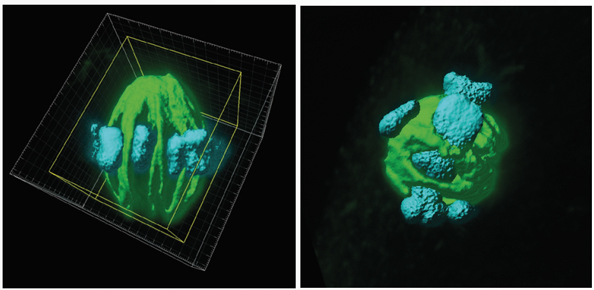Applications
 Part of the Oxford Instruments Group
Part of the Oxford Instruments Group
Expand
Collapse
 Part of the Oxford Instruments Group
Part of the Oxford Instruments Group
Embryology
In vitro oocyte maturation is an established technique that has been practiced for many years. However, as common as this practice is, success rates can still be improved. If researchers can better understand in vitro oocyte saturation, it may lead to better options for couples with fertility problems (i.e through the improvement of embryo quality).
A major factor in oocyte development is the antioxidant glutathione. Glutathione is one of several key factors involved in the assembly and preservation of spindle and cytoplasmic microtubules. Interestingly, oocyte glutathione levels inside in vitro maturation systems are relatively low compared to glutathione inside in vivo matured oocytes. Conversely, cellular oxidative stress is actually higher inside in vitro maturation systems compared to in vivo matured oocytes. This combination might help to explain the reduced fertilization potential as well as the poor embryo development of in vitro matured oocytes.
Dr. E.C. Curnow, as well as researchers at the University of Washington, University of Sydney and IVF Australia, further investigated the role of glutathione during oocyte development. For their experiments they used Macaque oocytes, which are commonly used models for human oocyte in vitro maturation studies. Their experimental approach was to compare cultured macaque oocytes (derived from unstimulated ovaries) in mCMRL-1066 alone with those supplemented with the glutathione donor GSH-OEt (glutathione ethyl ester).
The researchers imaged stained oocytes using a laser-scanning confocal microscope with a 63x, 1.2 NA water objective lens. Spindles were highlighted using Alexa Fluor 488, and the chromosomes were labeled with a DAPI stain. All oocytes were imaged as a z-series at .40 to .44 micron intervals in order to capture the entire spindle structure.
Dr. Curnow’s research team used the Imaris software to render 3-D images from the z-series. This allowed for a morphological assessment of all spindles and chromosomes in metaphase II (see images). For the analysis, barrel-shaped spindles with two poles were considered normal, while those which were asymmetrically shaped (i.e. had more than two poles), were considered abnormal.
Dr. Curnow’s research team used the Imaris software to render 3-D images from the z-series. This allowed for a morphological assessment of all spindles and chromosomes in metaphase II (see images). For the analysis, barrel-shaped spindles with two poles were considered normal, while those which were asymmetrically shaped (i.e. had more than two poles), were considered abnormal.
For the assessment of the chromosomes, those which aligned on the metaphase plate were considered normal while the displaced or disorganized chromosomes were denoted as abnormal.
Following this, the researchers used Imaris, the world’s leading 3D/4D image visualization and analysis software, to measure spindle dimensions. After identifying each of the spindle’s poles, the researchers used Imaris to record both the pole-to-pole length as well as spindle width at the spindle equator. They also examined chromosome alignment by creating isosurface renderings of the chromosomes and rotating them in 3-D space. Finally, they used Imaris to measure the width and length of the chromosomes aligned on the metaphase plate. “The software was incredibly powerful for 3-D rendering of spindle and chromatin morphology and for quantitative estimations of spindle dimensions under different treatment regimes,” E.C. Curnow said. “The ability to isolate separate channels for analysis and rotate the 3-D image provided an accurate assessment of normal vs. abnormal morphologies.”
The analysis of all the researcher’s confocal microscopy data elucidated significant differences in spindle morphology between in vivo and in vitro matured oocytes. In addition, GSH-OEt was shown to significantly affect spindle pole width. In conclusion, supplementing the culture medium with GSH-OEt produced better maturation and normal fertilization of the oocytes compared to the non-supplemented medium. Moreover, the researchers reported that glutathione supplementation using GSH-OEt benefits oocyte development. Finally, the authors indicated the need for follow up studies which should focus on whether the present findings are also relevant in clinical applications of human oocyte in vitro maturation.

Figure 1: Normal metaphor spindle and chromatin alignment in an in vitro matured macaque oocyte (left), and abnormal metaphase spindle (right) with displaced chromosomes (aneuploid) in an in vitro matured macaque oocyte. Figures provided by Dr. E.C. Curnow, University of Washington.
Research Paper: In vitro developmental potential of macaque oocytes, derived from unstimulated ovaries, following maturation in the presence of glutathione ethyl ester, Hum. Reprod. (2010) 25 (10):2465-2474, doi: 10.1093/humrep/deq225.
Author: Dr. E.C. Curnow and colleagues, University of Washington, University of Sydney and IVF Australia
Category: Case Study
